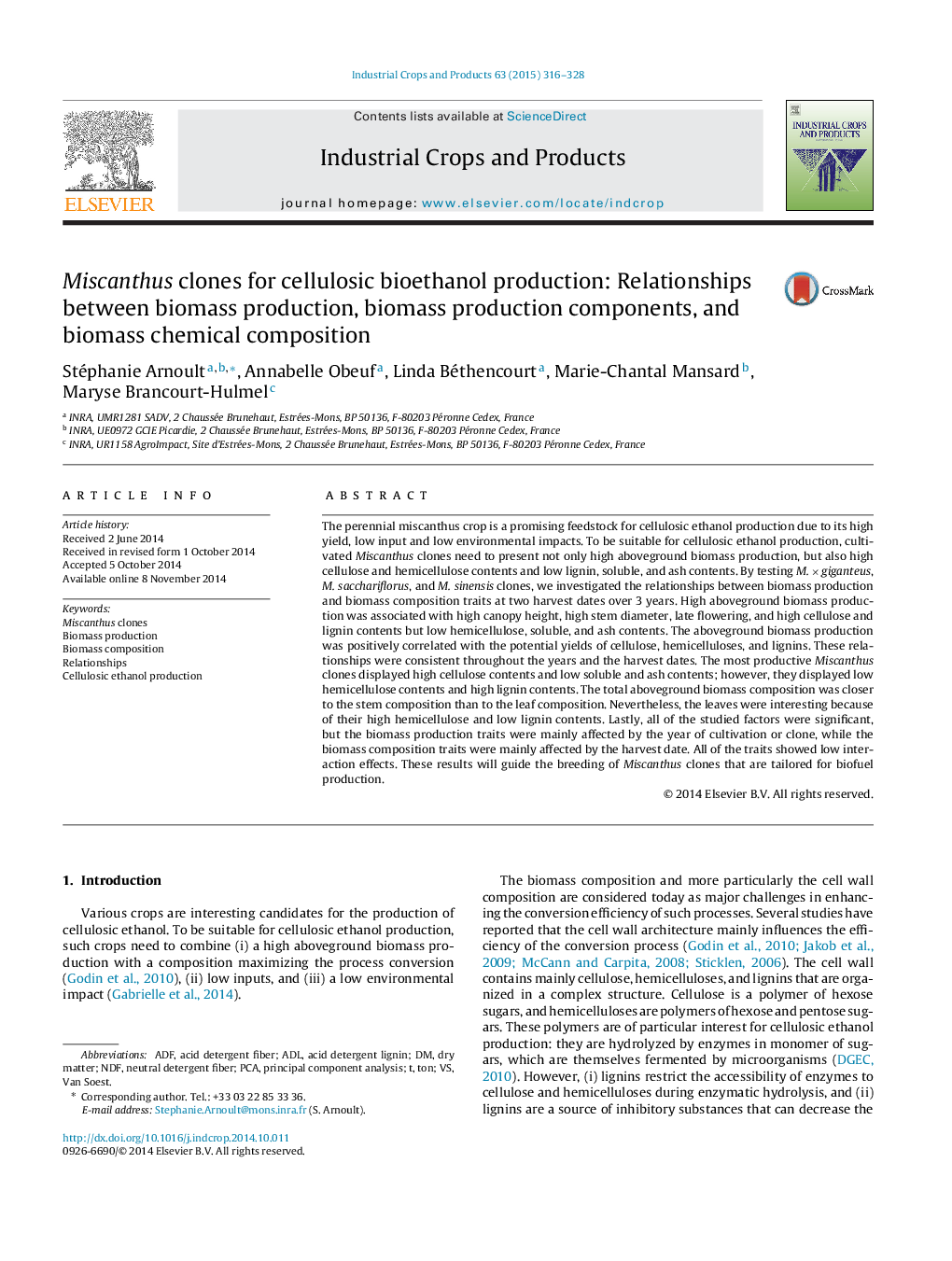| کد مقاله | کد نشریه | سال انتشار | مقاله انگلیسی | نسخه تمام متن |
|---|---|---|---|---|
| 4513275 | 1624846 | 2015 | 13 صفحه PDF | دانلود رایگان |

• Miscanthus biomass production and composition traits were not always synergistic.
• The relationships between these traits were consistent over years and harvest dates.
• The leaves and the stems contributed differently to the biomass composition.
• Biomass production traits were mainly influenced by year of cultivation or clone.
• Biomass composition traits were mainly influenced by harvest date.
The perennial miscanthus crop is a promising feedstock for cellulosic ethanol production due to its high yield, low input and low environmental impacts. To be suitable for cellulosic ethanol production, cultivated Miscanthus clones need to present not only high aboveground biomass production, but also high cellulose and hemicellulose contents and low lignin, soluble, and ash contents. By testing M. × giganteus, M. sacchariflorus, and M. sinensis clones, we investigated the relationships between biomass production and biomass composition traits at two harvest dates over 3 years. High aboveground biomass production was associated with high canopy height, high stem diameter, late flowering, and high cellulose and lignin contents but low hemicellulose, soluble, and ash contents. The aboveground biomass production was positively correlated with the potential yields of cellulose, hemicelluloses, and lignins. These relationships were consistent throughout the years and the harvest dates. The most productive Miscanthus clones displayed high cellulose contents and low soluble and ash contents; however, they displayed low hemicellulose contents and high lignin contents. The total aboveground biomass composition was closer to the stem composition than to the leaf composition. Nevertheless, the leaves were interesting because of their high hemicellulose and low lignin contents. Lastly, all of the studied factors were significant, but the biomass production traits were mainly affected by the year of cultivation or clone, while the biomass composition traits were mainly affected by the harvest date. All of the traits showed low interaction effects. These results will guide the breeding of Miscanthus clones that are tailored for biofuel production.
Journal: Industrial Crops and Products - Volume 63, January 2015, Pages 316–328